一、sql行转列:PIVOT
1、基本语法:
create table #table1
( id int ,code varchar(10) , name varchar(20) );
go
insert into gvTAZ#table1 ( id,code, name ) values ( 1, 'm1','a' ), ( 2, 'm2',null ), ( 3, 'm3', 'c' ), ( 4, 'm2','d' ), ( 5www.devze.com, 'm1','c' );
go
select * from #table1;
--方法一(推荐)
select PVT.code, PVT.a, PVT.b, PVT.c
from #table1 pivot(count(id) for name in(a, b, c)) as PVT;
--方法二
with P as (select * from #table1)
select PVT.code, PVT.a, PVT.b, PVT.c
from P pivot(count(id) for name in(a, b, c)) as PVT;
drop table #table1;
结果:
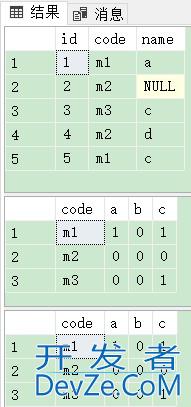
2、实例:
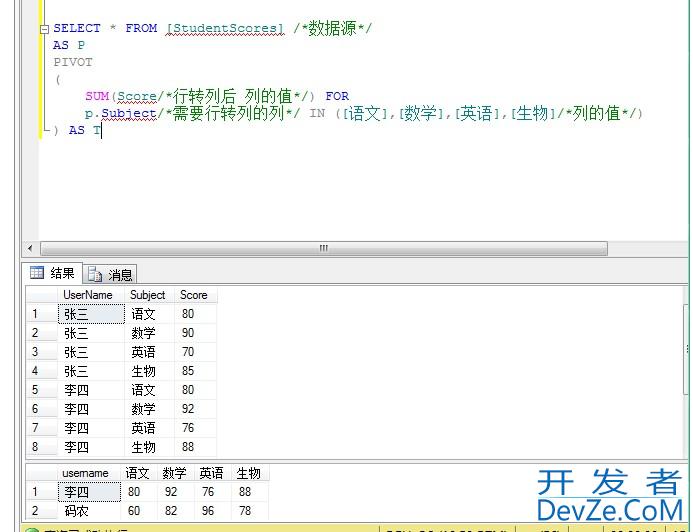
3、传统方式:(先汇总拼接出所需列的字符串,再动态执行转列)
先查询出要转为列的行数据,再拼接字符串。
create table #table1
( id int ,code varchar(10) , name varchar(20) );
go
inserwww.devze.comt into #table1 ( id,code, name ) values ( 1, 'm1','a' ), ( 2, 'm2',null ), ( 3, 'm3',编程客栈 'c' ), ( 4, 'm2','d' ), ( 5, 'm1','c' );
go
select * from #table1;
declare @strCN nvarchar(100);
select @strCN = isnull(@strCN + ',', '') + quotename(name) from #table1 group by name ;
print @strCN --‘[a],[c],[d]'
declare @SqlStr nvarchar(1000);
set @SqlStr = N'
select * from #table1 pivot ( count(ID) for name in (' + @strCN + N') ) as PVT';
exec ( @SqlStr );
drop table #table1;
结果:
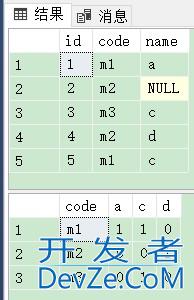
二、sql列转行:unPIVOT:
基本语法:
create table #table1 (id int, code varchar(10), name1 varchar(20), name2 var开发者_Mysqlchar(20), name3 varchar(20)); go insert into #table1(id, name1, name2, code, name3) values(1, 'm1', 'a1', 'a2', 'a3'), (2, 'm2', 'b1', 'b2', 'b3'), (4, 'm1编程客栈', 'c1', 'c2', 'c3'); go select * from #table1; --方法一 select PVT.id, PVT.code, PVT.name, PVT.val from #table1 unpivot(val for name in(name1, name2, name3)) as PVT; --方法二 with P as (select * from #table1) select PVT.id, PVT.code, PVT.name, PVT.val from P unpivot(val for name in(name1, name2, name3)) as PVT; drop table #table1;
结果:
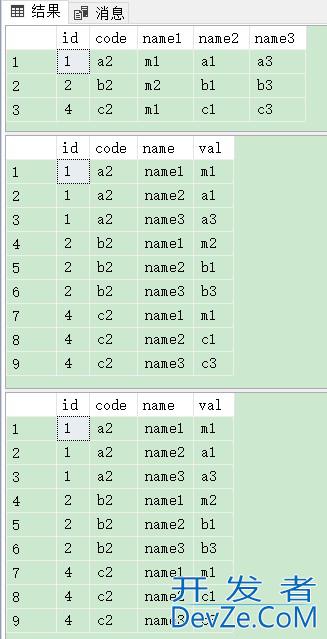
实例:
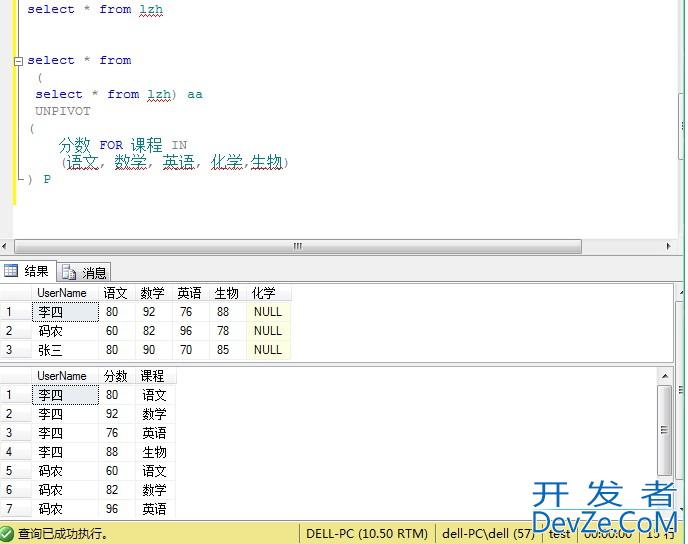
到此这篇关于SQL Server使用PIVOT与unPIVOT实现行列转换的文章就介绍到这了。希望对大家的学习有所帮助,也希望大家多多支持我们。
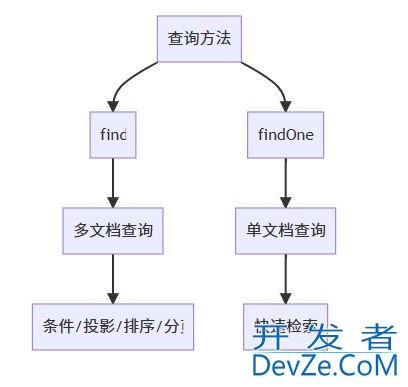
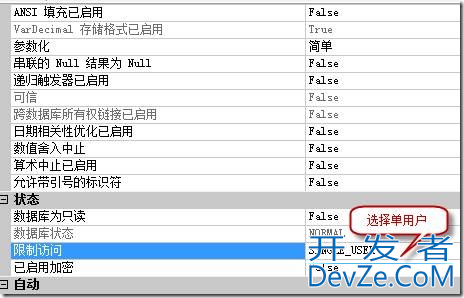
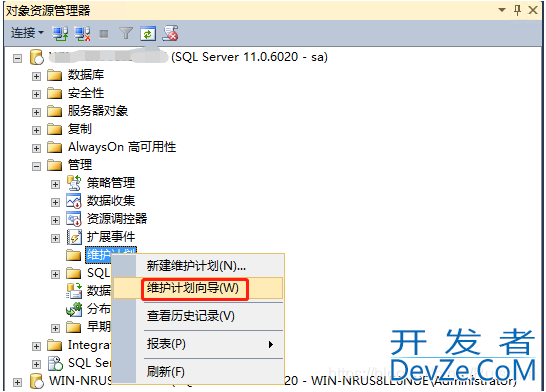
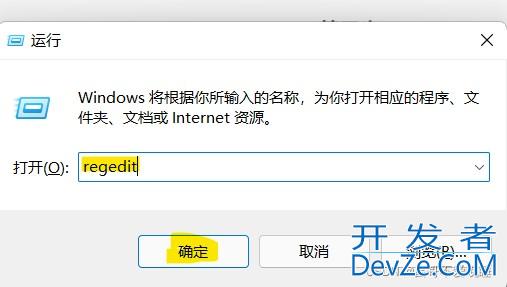
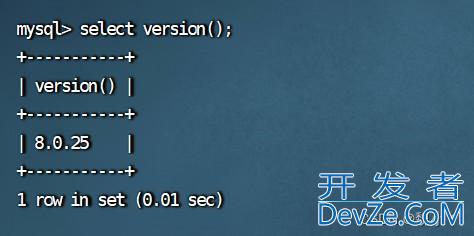

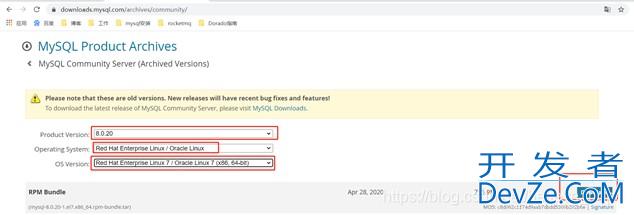
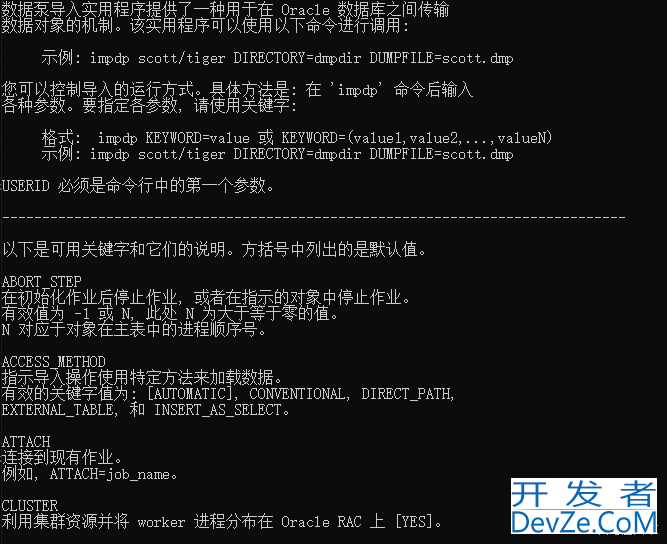
 加载中,请稍侯......
加载中,请稍侯......
精彩评论